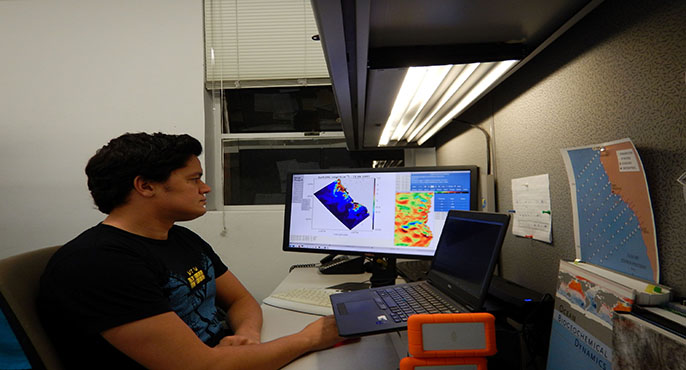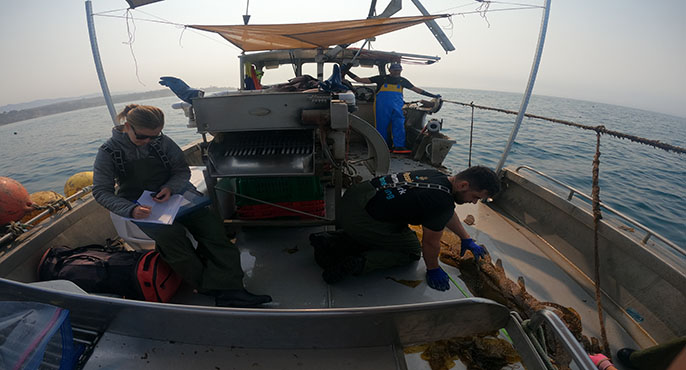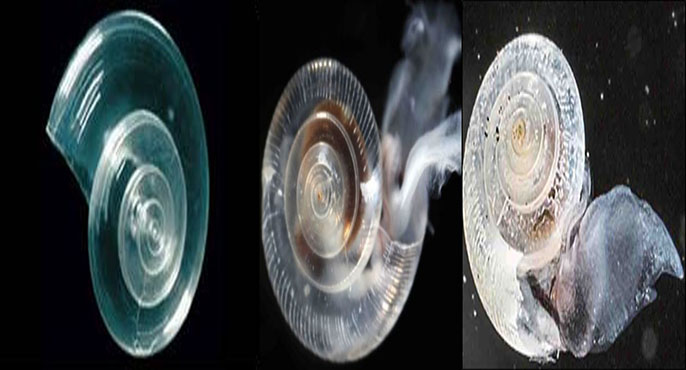Ocean acidification is a global change to seawater chemistry that is gradually shifting the ocean toward a more acidic, corrosive state. Along with the closely related phenomenon of hypoxia – or low dissolved oxygen levels – acidification is making the ocean a less habitable place for organisms ranging from sea snails to crabs to fish. The North American West Coast is among the most vulnerable ecosystems on earth to ocean acidification, underscoring the need to develop effective, science-informed management strategies for mitigating and offsetting ecosystem damage.
SCCWRP is part of an international community of researchers working to evaluate the effectiveness of multiple possible management solutions for reducing the impacts of acidification and hypoxia on coastal ecosystems. A central focus of this work is understanding if, when and where land-based pollutant discharges into coastal waters are exacerbating corrosive, hypoxic conditions. Researchers also are exploring how to effectively draw down carbon dioxide levels in coastal waters using the natural photosynthetic power of aquatic plants. Finally, SCCWRP and its partners are exploring how to use sentinel marine organisms to methodically monitor the impacts of acidification and hypoxia on vulnerable coastal ecosystems.

Managing a pervasive coastal phenomenon
Rising greenhouse gas emissions are the root cause of ocean acidification. As humans release carbon dioxide into the atmosphere, this gas doesn’t merely act as an insulating blanket that warms the planet. About a third of these emissions are absorbed by the ocean, causing seawater to move incrementally toward a more acidic, corrosive state. Under these conditions, shell-forming organisms ranging from tiny sea snails to oysters are having a tougher time building their shells, and fish are experiencing behavioral changes that make them more vulnerable to predation.
The coastal management community has a critical role to play in reducing the severity and progression of this global phenomenon – beyond simply reducing its carbon footprint. On the West Coast, coastal managers are working with researchers to understand how to optimally lessen the exposure of vulnerable marine species to corrosive seawater conditions, and to help these communities cope with mounting stress.

Understanding chemical and biological impacts
SCCWRP and its research partners are working to understand when and where ecological impacts will be greatest, so that coastal managers know which courses of action will be most effective and cost-efficient for protecting vulnerable coastal environments. This multi-pronged investigation breaks down into two main research lines:
- Tracking changing seawater chemistry: SCCWRP and its research partners are developing a set of integrated computer models for the North American West Coast that estimate how seawater chemistry is changing, and the role that land-based discharges play in exacerbating coastal acidification and hypoxia. In particular, nutrient-laden discharges may be triggering complex biogeochemical cycling processes that are making coastal seawater more acidic and hypoxic.
- Tracking changing biological health: SCCWRP and its research partners are working to understand how chemical alterations to seawater affect the health and distribution of marine communities, so they can use sensitive species to track how biological health is being impacted by acidification and hypoxia.

